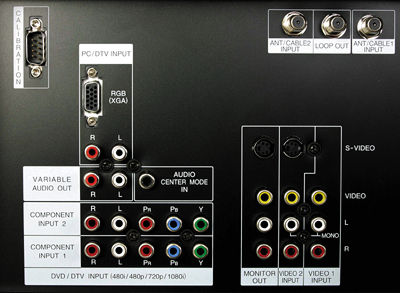Zenith D60WLCD HD-ready rear-projection LCD television Page 2

There were some trouble areas. On test patterns I saw definite convergence problems in the left and right thirds of the screen. This indicates a misalignment of the color panels, which cannot be user-adjusted. LCDs work by shining a light (in the Zenith, a halogen bulb) through three colored panels made up of millions of red, green, and blue pixels, and vary the light through each pixel to make the picture. But the panels must be precisely aligned; in the D60WLCD, they were not.
 On test patterns and, infrequently, on regular programming, white lines set in a black background vibrated and twittered a bit, even when stationary—probably a line-doubler issue. And while colors were generally not oversaturated—a common problem with LCDs—occasionally I saw slight blotchiness in skin tones and similar near-monotone areas.
On test patterns and, infrequently, on regular programming, white lines set in a black background vibrated and twittered a bit, even when stationary—probably a line-doubler issue. And while colors were generally not oversaturated—a common problem with LCDs—occasionally I saw slight blotchiness in skin tones and similar near-monotone areas.
But those problems were small compared to a stumbling block: the D60WLCD's inability to render true black. All it could muster was a moderately dark gray. This is not a specific failing of the Zenith but a liability of the LCD technology itself—in my opinion, a severe one. (Tom Norton found the same problem with Sony's Grand Wega, reviewed in the July/August 2002 issue.) Early plasma displays, including those I reviewed in 1998, looked like the Zenith D60WLCD does today. Plasmas have since advanced beyond LCDs in this regard; they can render true black, but cannot yet show detail in very dark areas.
The Zenith's inability to portray dark areas led to further problems. Except when the D60WLCD was displaying fully bright pictures, the lack of black on the screen gave the whole picture a slightly veiled, washed-out look. The set's other small problems were rarely visible; this one was always there, or just around the corner.
When I fed the Zenith high-definition signals from my digital tuner, it displayed them with aplomb. I watched a baseball game on HDNet, part of an HD movie on HBO, and a high-definition tour of an art-gallery exhibit on a public television station. All were 1080i shows converted to the Zenith's native resolution of 1280x720, and all looked fine—bright, sharp, alluring. But the set did not step over the looking-through-a-window threshold, beyond which HDTV looks real. Had I been able to watch a 720p show (no one broadcasts 720p HDTV in the Washington, DC area, where I live), I might have come to a different conclusion.
Conclusion
Overall, the Zenith D60WLCD is a fine LCD display at a good price for a 60-inch set. It did not suffer from the color oversaturation problem that plagues some LCDs, and its picture was credible and lifelike in most respects. While the black-level issue is endemic to LCDs, many people buy and enjoy them anyway. Anyone so inclined would certainly enjoy this one.
- Log in or register to post comments



























































